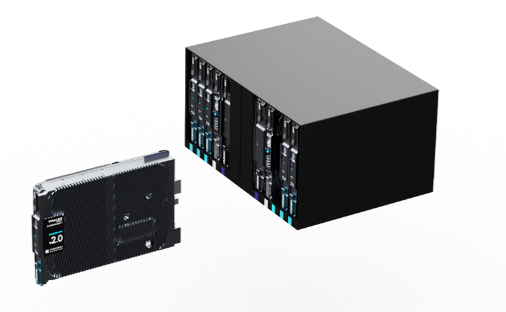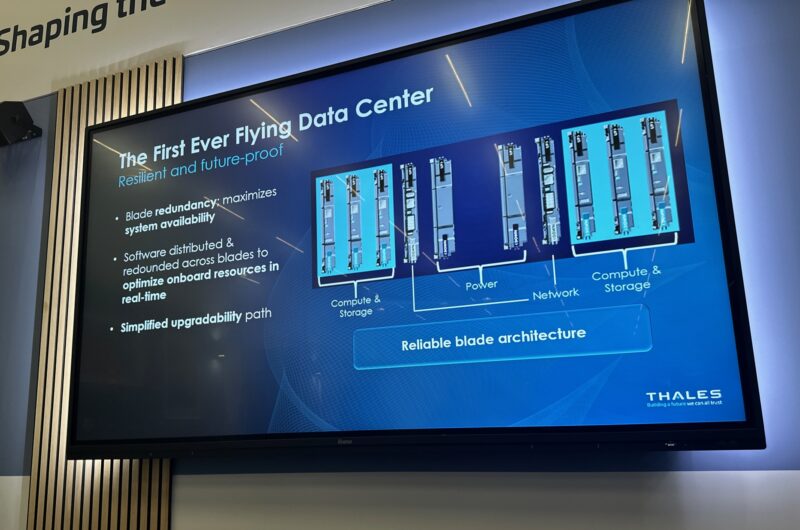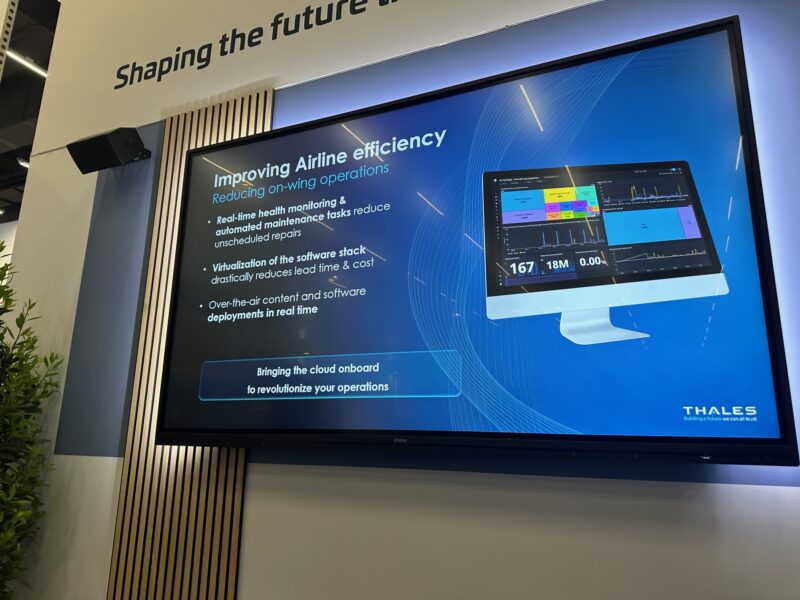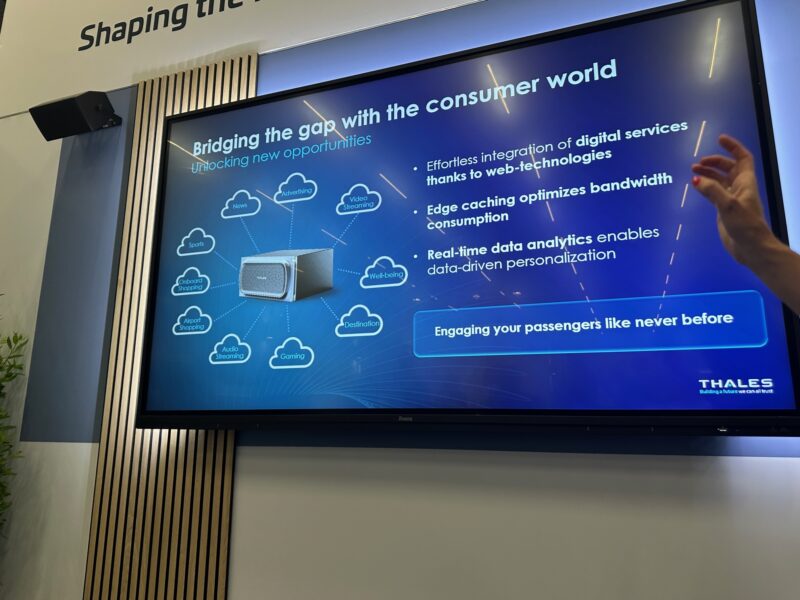Thales won a Crystal Cabin Award for its Onboard Data Center. However, it is of interest, and if you’ve worked in the server space, you might be recognising some of the concepts that Thales is showing off.
Especially if you’ve played with a Blade Server or two.

First concepts – what is a Blade Server?
Put simply, a blade server is a server computer with a modular design optimized to minimize the use of physical space and energy. It is made of an enclosure (or a Blade Enclosure), with Blades with differing abilities on them (be they compute, networking, storage and so on).
The idea behind it is to allow for a high density of the workload whilst allowing for high availability, as well as reducing power consumption and footprint. Some of you might have seen something like this in your Server Room or a rack.
Here’s a Wikipedia article to keep you entertained.
Of course, there are lots of steps to take to certify a Blade Server to be aerospace ready – with a lot more certifications, standards and safety criteria to achieve, compared to your run-of-the-mill blade server by SuperMicro, Dell or HP Enterprise (to name a few).
Let us take a look at a Blade Server for Aviation.
So why a Blade in Aviation?
Let’s be honest – the last thing you want is a hardware failure when in the air – thus having a service that can provide a High Availability possibility becomes important to process information – in this case, serving the IFE system.
It uses a hyper-converged architecture built around individual blades that support multiple functions. These blades share storage and compute capabilities, resulting in an aggregated storage space 10 times higher than the average IFE server.
The server features six patented technologies, which have been integrated into this solution.

It also introduces a chance to replace or upgrade the onboard infrastructure, simply by replacing or upgrading a blade depending on need (eg, more compute required, faster networking or a larger storage pool.
So what does that enable? Pooling, resourcing and of course, virtualisation.

High Avalibity means if a blade goes down, it can be fixed or a replacement blade can be deployed between flights.
Thales is to offer options allowing for real-time health monitoring, and virtualization of the software stack – allowing for reduced licencing costs as well as well better utilisation of the onboard equipment.
Add in-flight connectivity and it also allows the deployment of content in real-time as needed – be it on the ground or in the air.
As to what this enables – well, if you’re an airline, you’ll be looking at how this could generate revenue. And there are options by the bucket load.

The promise of high availability has to be matched by software
Those of you who have played in the world of servers, blade servers and high availability will know that these promises are wonderful – but they have to be matched with the software support to enable this transformation.
For a lot of us, that means a way to orchestrate the solution, as well as manage it when it goes wrong.
According to Thales, their software is smartly distributed and redounded across blades to optimize onboard resources in real time. In the event of one or two blades shutting down, the service remains up and running without any impact on the passenger experience.
More importantly, Thales quotes that The Onboard Data Center’s availability reaches 99.99%. For those who don’t do system management for a living – that means a downtime of 50 minutes per year.
That’s an impressive number. It’ll be interesting to see how this does in the field and if it can keep the promise of high availability.
Economy Class and Beyond was a guest of Thales at Aircraft Interiors Expo.
Welcome to Economy Class and Beyond. Your no-nonsense guide to network news, honest reviews, in-depth coverage, unique research, as well as the humour and madness I only know how to deliver.
Follow me on Twitter at @EconomyBeyond for the latest updates, as well as Mastodon too! You can follow me on Instagram too!
Also, remember that we are part of the BoardingArea community, bringing you the latest frequent flyer news from around the world.
Blade concept is not new in aviation. GE 787 and Honestly Epic does similar in an IMA (integrated modular avionics ) architecture. Been flying for 10+ years